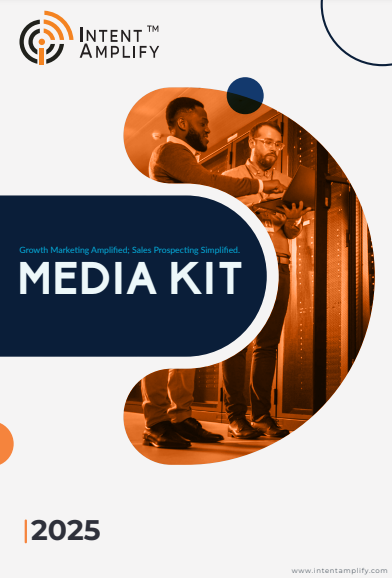
B2B Performance Marketing: Measurable Results, Actionable Insights
- Last updated on: February 26, 2024
The internet has undoubtedly helped businesses and consumers connect in an unprecedented way. Opening access to multiple channels previously unheard of, e-commerce has enabled the incredible exchange of currencies between B2B companies as well. What has interested marketers is the ‘data’ component of all of this enabling a deeper understanding of customer buying behaviors and allowing data-driven marketing strategies with measurable results. Perhaps, this is what has led to the coinage of the term ‘performance marketing’ – meaning marketing campaigns optimized in a way to perform better!
Performance Marketing in B2B – the definition
Performance marketing is specific to the online world. Advertisers pay only for actual results. This includes clicks, sales, views, or conversions.
This is in contrast to traditional and organic marketing, where we market mainly to build our brand and create awareness. In performance marketing, however, we drive actions and track and measure those actions, all while attributing the ROI of each asset, campaign, or activity.
While major corporations can spend millions of dollars on branding, most businesses need to focus on the bottom line to stay profitable. Performance marketing puts power back in the hands of the advertiser. You determine the action, then pay when that action has been completed – whether it’s a sale, lead, or click.
This allows companies to customize their marketing spend and expect a calculated result based on data analysis. This is good for B2B companies investing millions of dollars in marketing without knowing where the money is going.
Is Performance Marketing in B2B Similar to Affiliate Marketing?
Affiliate marketing is, in fact, a part of performance marketing, as it is entirely driven by metrics and goals. Affiliate marketing involves earning a commission for every online promotional activity of the product or service of another company. In this case, the affiliate marketer advertises on behalf of the merchant, with the intent of driving traffic, clicks, and sales to the merchant’s website. The affiliate receives payment only for actions taken, such as clicks, conversions, or leads.
Key Metrics in Performance Measurement

Key metrics in performance measurement for B2B vary depending on the specific goals and objectives of a business or marketing campaign. However, in the context of performance-based marketing for B2B, some common key metrics include:
Conversion Rate:
It is the percentage of website visitors who complete a desired action, such as making a purchase or filling out a form. It indicates how effective a campaign is at turning visitors into customers or leads.
Return on Investment (ROI):
It is the ratio of net profit to the initial cost of the investment. It measures the profitability of a marketing campaign relative to its cost.
Click-Through Rate (CTR):
It is the percentage of people who click on an ad or a link compared to the total number of people who see it. It reflects the engagement level and effectiveness of an advertising campaign.
Cost per Click (CPC) or Cost per Acquisition (CPA):
It is the amount of money spent on each click or acquisition. It helps evaluate the efficiency of ad spending and acquisition costs.
Lead Quality:
It is the assessment of how likely a lead is to become a customer. It focuses on the relevance and potential of acquired leads to contribute to business goals.
Customer Acquisition Cost (CAC):
It’s the cost associated with acquiring a new customer. It indicates how much money is needed to acquire each new customer, helping in budgeting and resource allocation.
Lifetime Value (LTV):
It is the predicted net profit attributed to the entire future relationship with a customer. It helps in understanding the long-term value of a customer and justifies marketing investments.
Engagement Metrics (likes, shares, comments):
It measures how users interact with content on social media or other platforms. It reflects audience engagement and the effectiveness of content in generating interest.
Bounce Rate:
It’s the percentage of visitors who navigate away from a site after viewing only one page. It indicates the relevance and engagement level of the landing page or website.
Conversion Funnel Metrics:
It analyzes different stages of the customer journey, from awareness to conversion. It helps identify areas for improvement and optimization in the marketing funnel.
Email Marketing Metrics (Open Rate, Click-Through Rate):
It measures the effectiveness of email campaigns by tracking how many recipients open the email and click on links. It provides insights into the performance of email marketing efforts.
When developing a performance measurement strategy, align metrics with specific business objectives. Continuously evaluate and adjust based on the evolving needs of the campaign or organization.
Building a Performance-Based Marketing Strategy In B2B
Building a successful performance marketing strategy in B2B requires a data-driven and goal-oriented approach. Here’s a breakdown of the key steps involved:
1. Define your goals and target audience:
- Set SMART goals: Clearly define your objectives, ensuring they are Specific, Measurable, Achievable, Relevant, and Time-bound. Examples include generating qualified leads, increasing website traffic, or driving sales within a specific timeframe.
- Know your buyer persona: Conduct thorough market research to understand your ideal B2B customer. This includes their demographics, pain points, decision-making process, and preferred communication channels.
2. Choose your marketing channels:
- Identify relevant channels: Evaluate various channels like search engine marketing (SEM), social media advertising, account-based marketing (ABM), content marketing, and email marketing, considering your target audience’s behavior and the type of content that resonates best with them.
- Prioritize based on budget and expertise: Start with a few channels you have the resources and expertise to manage effectively.
3. Develop your campaign strategy:
- Craft compelling messaging: Tailor your messaging to resonate with your target audience’s pain points and highlight the value proposition of your product or service.
- Create high-quality content: Develop content that educates, engages, and ultimately converts your audience. This could include white papers, case studies, blog posts, or infographics.
- Optimize for conversions: Ensure your landing pages, website forms, and overall user experience are optimized to drive conversions, such as lead generation or sales inquiries.
4. Implement and optimize your campaigns:
- Set up tracking and analytics: Use analytics tools to monitor your campaign performance across various metrics like impressions, clicks, leads generated, and cost per acquisition (CPA).
- Test and iterate: Regularly test different elements of your campaign, such as ad copy, landing page design, and targeting parameters, to identify what works best and optimize for better performance.
- Refine your strategy based on data: Analyze your results and adjust your strategy accordingly. This may involve shifting budget allocation across channels, refining your messaging, or creating new content types that resonate better with your audience.
Additional considerations for B2B performance marketing:
- Focus on building relationships: B2B buying cycles are often longer, so building trust and relationships with potential customers is crucial. Utilize content marketing, webinars, and other engagement strategies to nurture leads and establish brand credibility.
- Account-based marketing (ABM): If your target audience consists of a well-defined set of specific companies, consider implementing ABM tactics for personalized and targeted outreach.
- Attribution modeling: helps you identify key touchpoints in your B2B buyer’s journey. This allows you to track conversions accurately. With this insight, you can optimize your marketing efforts more effectively.
By following these steps and continuously adapting your strategy based on data insights, you can build a successful B2B performance marketing strategy that drives measurable results for your business.




